1.
Introduction
In this article, we study the following anisotropic singular →p(⋅)-Laplace equation
where Ω is a bounded domain in RN (N≥3) with smooth boundary ∂Ω; f∈L1(Ω) is a positive function; g∈L∞(Ω) is a nonnegative function; β∈C(¯Ω) such that 1<β(x)<∞ for any x∈¯Ω; q∈C(¯Ω) such that 0<q(x)<1 for any x∈¯Ω; pi∈C(¯Ω) such that 2≤pi(x)<N for any x∈¯Ω, i∈{1,...,N}.
The differential operator
that appears in problem (1.1) is an anisotropic variable exponent →p(⋅)-Laplace operator, which represents an extension of the p(⋅)-Laplace operator
obtained in the case for each i∈{1,...,N}, pi(⋅)=p(⋅).
In the variable exponent case, p(⋅), the integrability condition changes with each point in the domain. This makes variable exponent Sobolev spaces very useful in modeling materials with spatially varying properties and in studying partial differential equations with non-standard growth conditions [1,2,3,4,5,6,7,8].
Anisotropy, on the other hand, adds another layer of complexity, providing a robust mathematical framework for modeling and solving problems that involve complex materials and phenomena exhibiting non-uniform and direction-dependent properties. This is represented mathematically by having different exponents for different partial derivatives. We refer to the papers [9,10,11,12,13,14,15,16,17,18,19,20,21] and references for further reading.
The progress in researching anisotropic singular problems with →p(⋅)-growth, however, has been relatively slow. There are only a limited number of studies available on this topic in academic literature. We could only refer to the papers [22,23,24] that were published recently. In [22], the author studied an anisotropic singular problems with constant case p(⋅)=p but with a variable singularity, where existence and regularity of positive solutions was obtained via the approximation methods. In [23], the author obtained the existence and regularity results of positive solutions by using the regularity theory and approximation methods. In [24], the authors showed the existence of positive solutions using the regularity theory and maximum principle. However, none of these papers studied combined effects of variable singular and sublinear nonlinearities.
We would also like to mention that the singular problems of the type
have been intensively studied because of their wide applications to physical models in the study of non-Newtonian fluids, boundary layer phenomena for viscous fluids, chemical heterogenous catalysts, glacial advance, etc. (see, e.g., [25,26,27,28,29,30]).
These studies, however, have mainly focused on the case 0<β<1, i.e., the weak singularity (see, e.g. [31,32,33,34,35,36]), and in this case, the corresponding energy functional is continuous.
When β>1 (the strong singularity), on the other hand, the situation changes dramatically, and numerous challenges emerge in the analysis of differential equations of the type (1.2), where the primary challenge encountered is due to the lack of integrability of u−β for u∈H10(Ω) [37,38,39,40,41].
To overcome these challenges, as an alternative approach, the so-called "compatibility relation" between f(x) and β has been introduced in the recent studies [37,40,42]. This method, used along with a constrained minimization and the Ekeland's variational principle [43], suggests a practical approach to obtain solutions to the problems of the type (1.2). In the present paper, we generalize these results to nonstandard p(⋅)-growth.
The paper is organized as follows. In Section 2, we provide some fundamental information for the theory of variable Sobolev spaces since it is our work space. In Section 3, first we obtain the auxiliary results. Then, we present our main result and obtain a positive solution to problem (1.1). In Section 4, we provide an example to illustrate our results in a concrete way.
2.
Preliminaries
We start with some basic concepts of variable Lebesgue-Sobolev spaces. For more details, and the proof of the following propositions, we refer the reader to [1,2,44,45].
For p∈C+(¯Ω) denote
For any p∈C+(¯Ω), we define the variable exponent Lebesgue space by
then, Lp(⋅)(Ω) endowed with the norm
becomes a Banach space.
Proposition 2.1. For any u∈Lp(⋅)(Ω) and v∈Lp′(⋅)(Ω), we have
where Lp′(x)(Ω) is the conjugate space of Lp(⋅)(Ω) such that 1p(x)+1p′(x)=1.
The convex functional Λ:Lp(⋅)(Ω)→R defined by
is called modular on Lp(⋅)(Ω).
Proposition 2.2. If u,un∈Lp(⋅)(Ω) (n=1,2,...), we have
(i) |u|p(⋅)<1(=1;>1)⇔Λ(u)<1(=1;>1);
(ii) |u|p(⋅)>1⟹|u|p−p(⋅)≤Λ(u)≤|u|p+p(⋅);
(iii) |u|p(⋅)≤1⟹|u|p+p(⋅)≤Λ(u)≤|u|p−p(⋅);
(iv) limn→∞|un|p(⋅)=0⇔limn→∞Λ(un)=0;limn→∞|un|p(⋅)=∞⇔limn→∞Λ(un)=∞.
Proposition 2.3. If u,un∈Lp(⋅)(Ω) (n=1,2,...), then the following statements are equivalent:
(i) limn→∞|un−u|p(⋅)=0;
(ii) limn→∞Λ(un−u)=0;
(iii) un→u in measure in Ω and limn→∞Λ(un)=Λ(u).
The variable exponent Sobolev space W1,p(⋅)(Ω) is defined by
with the norm
or equivalently
for all u∈W1,p(⋅)(Ω).
As shown in [46], the smooth functions are in general not dense in W1,p(⋅)(Ω), but if the variable exponent p∈C+(¯Ω) is logarithmic Hölder continuous, that is
then the smooth functions are dense in W1,p(⋅)(Ω) and so the Sobolev space with zero boundary values, denoted by W1,p(⋅)0(Ω), as the closure of C∞0(Ω) does make sense. Therefore, the space W1,p(⋅)0(Ω) can be defined as ¯C∞0(Ω)‖⋅‖1,p(⋅)=W1,p(⋅)0(Ω), and hence, u∈W1,p(⋅)0(Ω) iff there exists a sequence (un) of C∞0(Ω) such that ‖un−u‖1,p(⋅)→0.
As a consequence of Poincaré inequality, ‖u‖1,p(⋅) and |∇u|p(⋅) are equivalent norms on W1,p(⋅)0(Ω) when p∈C+(¯Ω) is logarithmic Hölder continuous. Therefore, for any u∈W1,p(⋅)0(Ω), we can define an equivalent norm ‖u‖ such that
Proposition 2.4. If 1<p−≤p+<∞, then the spaces Lp(⋅)(Ω) and W1,p(⋅)(Ω) are separable and reflexive Banach spaces.
Proposition 2.5. Let q∈C(¯Ω). If 1≤q(x)<p∗(x) for all x∈¯Ω, then the embedding W1,p(⋅)(Ω)↪Lq(⋅)(Ω) is compact and continuous, where
Finally, we introduce the anisotropic variable exponent Sobolev spaces.
Let us denote by →p:¯Ω→RN the vectorial function →p(⋅)=(p1(⋅),...,pN(⋅)) with pi∈C+(¯Ω), i∈{1,...,N}. We will use the following notations.
Define →P+,→P−∈RN as
and P++,P+−,P−−∈R+ as
Below, we use the definitions of the anisotropic variable exponent Sobolev spaces as given in [12] and assume that the domain Ω⊂RN satisfies all the necessary assumptions given in there.
The anisotropic variable exponent Sobolev space is defined by
which is associated with the norm
W1,→p(⋅)(Ω) is a reflexive Banach space under this norm.
The subspace W1,→p(⋅)0(Ω)⊂W1,→p(⋅)(Ω) consists of the functions that are vanishing on the boundary, that is,
We can define the following equivalent norm on W1,→p(⋅)0(Ω)
since the smooth functions are dense in W1,→p(⋅)0(Ω), as the variable exponent pi∈C+(¯Ω), i∈{1,...,N} is logarithmic Hölder continuous.
The space W1,→p(⋅)0(Ω) is also a reflexive Banach space (for the theory of the anisotropic Sobolev spaces see, e.g., the monographs [2,47,48] and the papers [12,15]).
Throughout this article, we assume that
and define P∗−∈R+ and P−,∞∈R+ by
Proposition 2.6. [[15], Theorem 1] Suppose that Ω⊂RN(N≥3) is a bounded domain with smooth boundary and relation (2.2) is fulfilled. For any q∈C(¯Ω) verifying
the embedding
is continuous and compact.
3.
The main results
We define the singular energy functional J:W1,→p(⋅)0(Ω)→R corresponding to equation (1.1) by
Definition 3.1. A function u is called a weak solution to problem (1.1) if u∈W1,→p(⋅)0(Ω) such that u>0 in Ω and
for all φ∈W1,→p(⋅)0(Ω).
Definition 3.2. Due to the singularity of J on W1,→p(⋅)0(Ω), we apply a constrained minimization for problem (1.1). As such, we introduce the following constrains:
and
Remark 1. N2 can be considered as a Nehari manifold, even though in general it may not be a manifold. Therefore, if we set
then one might expect that c0 is attained at some u∈N2 (i.e., N2≠∅) and that u is a critical point of J.
Throughout the paper, we assume that the following conditions hold:
(A1) β:¯Ω→(1,∞) is a continuous function such that 1<β−≤β(x)≤β+<∞.
(A2) q:¯Ω→(0,1) is a continuous function such that 0<q−≤q(x)≤q+<1 and q++1≤β−.
(A3) 2≤P−−≤P++<P∗− for almost all x∈¯Ω.
(A4) f∈L1(Ω) is a positive function, that is, f(x)>0 a.e. in Ω.
(A5) g∈L∞(Ω) is a nonnegative function.
Lemma 3.3. For any u∈W1,→p(⋅)0(Ω) satisfying ∫Ωf(x)|u|1−β(x)dx<∞, the functional J is well-defined and coercive on W1,→p(⋅)0(Ω).
Proof. Denote by I1,I2 the indices sets I1={i∈{1,2,...,N}:|∂xiu|pi(⋅)≤1} and I2={i∈{1,2,...,N}:|∂xiu|pi(⋅)>1}. Using Proposition 2.2, it follows
which shows that J is well-defined on W1,→p(⋅)0(Ω).
Applying similar steps and using the generalized mean inequality for ∑Ni=1|∂xiu|P−−pi(⋅) gives
That is, J is coercive (i.e., J(u)→∞ as ‖u‖→p(⋅)→∞), and bounded below on W1,→p(⋅)0(Ω). □
Next, we provide a-priori estimate.
Lemma 3.4. Assume that (un)⊂N1 is a nonnegative minimizing sequence for the minimization problem limn→∞J(un)=infN1J. Then, there are positive real numbers δ1,δ2 such that
Proof. We assume by contradiction that there exists a subsequence (un) (not relabelled) such that un→0 in W1,→p(⋅)0(Ω). Thus, we can assume that ‖un‖→p(⋅)<1 for n large enough, and therefore, |∂xiun|Lpi(⋅)<1. Then, using Proposition 2.2, we have
We recall the following elementary inequality: for all r,s>0 and m>0 it holds
where K:=max{1,21−m}. If we let r=|∂x1un|P−−Lp1(⋅), s=|∂x2un|P−−Lp2(⋅) and m=P−− in (3.5), it reads
where K=max{1,21−P−−}=1. Applying this argument to the following terms in the sum ∑Ni=1|∂xiun|P−−pi(⋅) consecutively leads to
Now, using (3.7) and the reversed Hölder's inequality, we have
By the assumption, (un)⊂N1. Thus, using (3.8) and Proposition 2.2 leads to
Considering the assumption (A2), this can only happen if ∫Ω|un|dx→∞, which is not possible. Therefore, there exists a positive real number δ1 such that ‖un‖→p(⋅)≥δ1.
Now, let's assume, on the contrary, that ‖un‖→p(⋅)>1 for any n. We know, by the coerciveness of J, that the infimum of J is attained, that is, ∞<m:=infu∈W1,→p(⋅)0(Ω)J(u). Moreover, due to the assumption limn→∞J(un)=infN1J, (J(un)) is bounded. Then, applying the same steps as in (3.3), it follows
for some constant C>0. If we drop the nonnegative terms, we obtain
Dividing the both sides of the above inequality by ‖un‖q++1→p(⋅) and passing to the limit as n→∞ leads to a contradiction since we have q−+1<P−−. Therefore, there exists a positive real number δ2 such that ‖un‖→p(⋅)≤δ2.
Lemma 3.5. N1 is closed in W1,→p(⋅)0(Ω).
Proof. Assume that (un)⊂N1 such that un→ˆu(strongly) in W1,→p(⋅)0(Ω). Thus, un(x)→ˆu(x) a.e. in Ω, and ∂xiun→∂xiˆu in Lpi(⋅)(Ω) for i=1,2,...,N. Then, using Fatou's lemma, it reads
and hence,
which means ˆu∈N1. N1 is closed in W1,→p(⋅)0(Ω).
Lemma 3.6. For any u∈W1,→p(⋅)0(Ω) satisfying ∫Ωf(x)|u|1−β(x)dx<∞, there exists a unique continuous scaling function u∈W1,→p(⋅)0(Ω)→(0,∞):u⟼t(u) such that t(u)u∈N2, and t(u)u is the minimizer of the functional J along the ray {tu:t>0}, that is, inft>0J(tu)=J(t(u)u).
Proof. Fix u∈W1,→p(⋅)0(Ω) such that ∫Ωf(x)|u|1−β(x)dx<∞. For any t>0, the scaled functional, J(tu), determines a curve that can be characterized by
Then, for a t∈[0,∞), tu∈N2 if and only if
First, we show that Φ(t) attains its minimum on [0,∞) at some point t=t(u).
Considering the fact 0<∫Ωf(x)|u|1−β(x)dx<∞, we will examine two cases for t.
For 0<t<1:
Then, Ψ0:(0,1)→R is continuous. Taking the derivative of Ψ0 gives
It is easy to see from (3.12) that Ψ′0(t)<0 when t>0 is small enough. Therefore, Ψ0(t) is decreasing when t>0 is small enough. In the same way,
Then, Ψ1:(0,1)→R is continuous. Taking the derivative of Ψ1 gives
But (3.13) also suggests that Ψ′1(t)<0 when t>0 is small enough. Thus, Ψ1(t) is decreasing when t>0 is small enough. Therefore, since Ψ0(t)≤Φ(t)≤Ψ1(t) for 0<t<1, Φ(t) is decreasing when t>0 is small enough.
For t>1: Following the same arguments shows that Ψ′0(t)>0 and Ψ′1(t)>0 when t>1 is large enough, and therefore, both Ψ0(t) and Ψ1(t) are increasing. Thus, Φ(t) is increasing when t>1 is large enough. In conclusion, since Φ(0)=0, Φ(t) attains its minimum on [0,∞) at some point, say t=t(u). That is, ddtΦ(t)|t=t(u)=0. Then, t(u)u∈N2 and inft>0J(tu)=J(t(u)u).
Next, we show that scaling function t(u) is continuous on W1,→p(⋅)0(Ω).
Let un→u in W1,→p(⋅)0(Ω)∖{0}, and tn=t(un). Then, by the definition, tnun∈N2. Defined in this way, the sequence tn is bounded. Assume on the contrary that tn→∞ (up to a subsequence). Then, using the fact tnun∈N2 it follows
which suggests a contradiction when tn→∞. Hence, sequence tn is bounded. Therefore, there exists a subsequence tn (not relabelled) such that tn→t0, t0≥0. On the other hand, from Lemma 3.4, ‖tnun‖→p(⋅)≥δ1>0. Thus, t0>0 and t0u∈N2. By the uniqueness of the map t(u), t0=t(u), which concludes the continuity of t(u). In conclusion, for any ∈W1,→p(⋅)0(Ω) satisfying ∫Ωf(x)|u|1−β(x)dx<∞, the function t(u) scales u∈W1,→p(⋅)0(Ω) continuously to a point such that t(u)u∈N2.
Lemma 3.7. Assume that (un)⊂N1 is the nonnegative minimizing sequence for the minimization problem limn→∞J(un)=infN1J. Then, there exists a subsequence (un) (not relabelled) such that un→u∗ (strongly) in W1,→p(⋅)0(Ω).
Proof. Since (un) is bounded in W1,→p(⋅)0(Ω) and W1,→p(⋅)0(Ω) is reflexive, there exists a subsequence (un), not relabelled, and u∗∈W1,→p(⋅)0(Ω) such that
● un⇀u∗ (weakly) in W1,→p(⋅)0(Ω),
● un→u∗ in Ls(⋅)(Ω), 1<s(x)<P−,∞, for all x∈¯Ω,
● un(x)→u∗(x) a.e. in Ω.
Since the norm ‖⋅‖→p(⋅) is a continuous convex functional, it is weakly lower semicontinuous. Using this fact along with the Fatou's lemma, and Lemma 3.4, it reads
The above result implies, up to subsequences, that
Thus, (3.15) along with un⇀u∗ in W1,→p(⋅)0(Ω) show that un→u∗ in W1,→p(⋅)0(Ω).
The following is the main result of the present paper.
Theorem 3.8. Assume that the conditions (A1)−(A5) hold. Then, problem (1.1) has at least one positive W1,→p(⋅)0(Ω)-solution if and only if there exists ¯u∈W1,→p(⋅)0(Ω) satisfying ∫Ωf(x)|¯u|1−β(x)dx<∞.
Proof. (⇒): Assume that the function u∈W1,→p(⋅)0(Ω) is a weak solution to problem (1.1). Then, letting u=φ in Definition (3.1) gives
where PM:=max{P−−,P++} and qM:=max{q−,q+}, changing according to the base.
(⇐): Assume that there exists ¯u∈W1,→p(⋅)0(Ω) such that ∫Ωf(x)|¯u|1−β(x)dx<∞. Then, by Lemma 3.6, there exists a unique number t(¯u)>0 such that t(¯u)¯u∈N2.
The information we have had about J so far and the closeness of N1 allow us to apply Ekeland's variational principle to the problem infN1J. That is, it suggests the existence of a corresponding minimizing sequence (un)⊂N1 satisfying the following:
(E1) J(un)−infN1J≤1n,
(E2) J(un)−J(ν)≤1n‖un−ν‖→p(⋅),∀ν∈N1.
Due to the fact J(|un|)=J(un), it is not wrong to assume that un≥0 a.e. in Ω. Additionally, considering that (un)⊂N1 and following the same approach as it is done in the (⇒) part, we can obtain that ∫Ωf(x)|un|1−β(x)dx<∞. If all this information and the assumptions (A1), (A2) are taken into consideration, it follows that un(x)>0 a.e. in Ω.
The rest of the proof is split into two cases.
Case Ⅰ: (un)⊂N1∖N2 for n large.
For a function φ∈W1,→p(⋅)0(Ω) with φ≥0, and t>0, we have
Therefore, using (A1), (A2) gives
Then, when t>0 is small enough in (3.16), we obtain
which means that ν:=un+tφ∈N1. Now, using (E2), it reads
Dividing the above inequality by t and passing to the infimum limit as t→0 gives
Calculation of I1,I2 gives
and
For I3: Since for t>0 it holds
we can apply Fatou's lemma, that is,
Now, substituting I1,I2,I3 gives
From Lemma 3.7, we know that un→u∗ in W1,→p(⋅)0(Ω). Thus, also considering Fatou's lemma, we obtain
for any φ∈W1,→p(⋅)0(Ω) with φ≥0. Letting φ=u∗ in (3.21) shows clearly that u∗∈N1.
Lastly, from Lemma 3.7, we can conclude that
which means
Case Ⅱ: There exists a subsequence of (un) (not relabelled) contained in N2.
For a function φ∈W1,p(x)0(Ω) with φ≥0, t>0, and un∈N2, we have
and hence, there exists a unique continuous scaling function, denoted by θn(t):=t(un+tφ)>0, corresponding to (un+tφ) so that θn(t)(un+tφ)∈N2 for n=1,2,.... Obviously, θn(0)=1. Since θn(t)(un+tφ)∈N2, we have
and
where βm:=min{β−,β+}. Then, using (3.24) and (3.25) together gives
for some constants τ1,τ2∈(0,1). To proceed, we assume that θ′n(0)=ddtθn(t)|t=0∈[−∞,∞]. In case this limit does not exist, we can consider a subsequence tk>0 of t such that tk→0 as k→∞.
Next, we show that θ′n(0)≠∞.
Dividing the both sides of (3.26) by t and passing to the limit as t→0 leads to
or
which, along with Lemma 3.4, concludes that −∞≤θ′n(0)<∞, and hence, θ′n(0)≤¯c, uniformly in all large n.
Next, we show that θ′n(0)≠−∞.
First, we apply Ekeland's variational principle to the minimizing sequence (un)⊂N2(⊂N1). Thus, letting ν:=θn(t)(un+tφ) in (E2) gives
If we use Lemma 3.4 to manipulate the norm ‖u+tφ‖→p(⋅), the integral in the last line of (3.29) can be written as follows
Then,
Dividing by t and passing to the limit as t→0 gives
which concludes that θ′n(0)≠−∞. Thus, θ′n(0)≥c_ uniformly in large n.
In conclusion, there exists a constant, C0>0 such that |θ′n(0)|≤C0 when n≥N0,N0∈N.
Next, we show that u∗∈N2.
Using (E2) again, we have
Dividing by t and passing to the limit as t→0 gives
If we consider that |θ′n(0)|≤C0 uniformly in n, we obtain that ∫Ωf(x)u−β(x)ndx<∞. Therefore, for n→∞ it reads
for all φ∈W1,→p(⋅)0(Ω), φ≥0. Letting φ=u∗ in (3.35) shows clearly that u∗∈N1.
This means, as with the Case Ⅰ, that we have
By taking into consideration the results (3.21), (3.22), (3.35), and (3.36), we infer that u∗∈N2 and (3.35) holds, in the weak sense, for both cases. Additionally, since u∗≥0 and u∗≠0, by the strong maximum principle for weak solutions, we must have u∗(x)>0almost everywhere inΩ.
Next, we show that u∗∈W1,→p(⋅)0(Ω) is a weak solution to problem (1.1).
For a random function ϕ∈W1,→p(⋅)0(Ω), and ε>0, let φ=(u∗+εϕ)+=max{0,u∗+εϕ}. We split Ω into two sets as follows:
and
If we replace φ with (u∗+εϕ) in (3.35), it follows
Since u∗∈N2, we have
Dividing by ε and passing to the limit as ε→0, and considering that |Ω<|→0 as ε→0 gives
However, since the function ϕ∈W1,→p(⋅)0(Ω) is chosen randomly, it follows that
which concludes that u∗∈W1,→p(⋅)0(Ω) is a weak solution to problem (1.1).
4.
Example
Suppose that
Then equation (1.1) becomes
Theorem 4.1. Assume that the conditions (A1)−(A3) hold. If 1<β+<1+k+1α and α>1/2, then, problem (4.1) has at least one positive W1,→p(⋅)0(B1(0))-solution.
Proof. Function f(x)=(1−|x|)kβ(x)≤(1−|x|)kβ− is clearly non-negative and bounded above within the unit ball B1(0) since |x|<1. Hence, f(x)∈L1(B1(0)).
Now, let's choose ¯u=(1−|x|)α. Since ¯u is also non-negative and bounded within B(0,1), it is in ¯u∈LP++(B(0,1)). Indeed,
Next, we show that ∂xi¯u∈Lpi(⋅)(B1(0)) for i∈{1,...,N}. Fix i∈{1,...,N}. Then
Considering that x∈B1(0), we obtain
Therefore,
if α>P−−−1P−−. Thus, ∂xi¯u∈Lpi(⋅)(B1(0)) for i∈{1,...,N}, and as a result, ¯u∈W1,→p(⋅)0(B1(0)).
Finally, we show that ∫B(0,1)(1−|x|)k(1−|x|)α(1−β(x))β(x)dx<∞. Then,
Thus, by Theorem 3.8, problem (4.1) has at least one positive W1,→p(⋅)0(B1(0))-solution.
Use of AI tools declaration
The author declares he has not used Artificial Intelligence (AI) tools in the creation of this article.
Acknowledgments
This work was supported by Athabasca University Research Incentive Account [140111 RIA].
Conflict of interest
The author declares there is no conflict of interest.











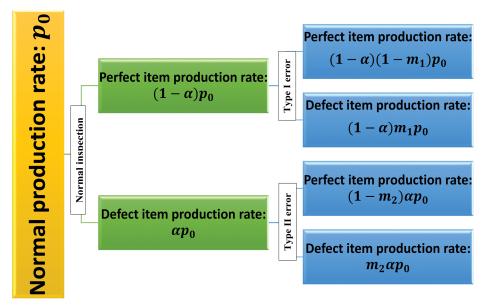

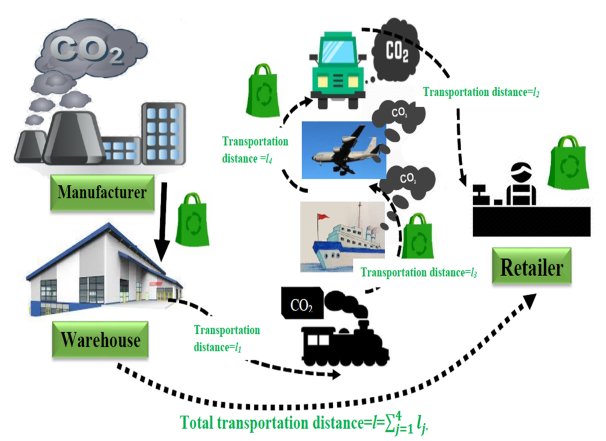
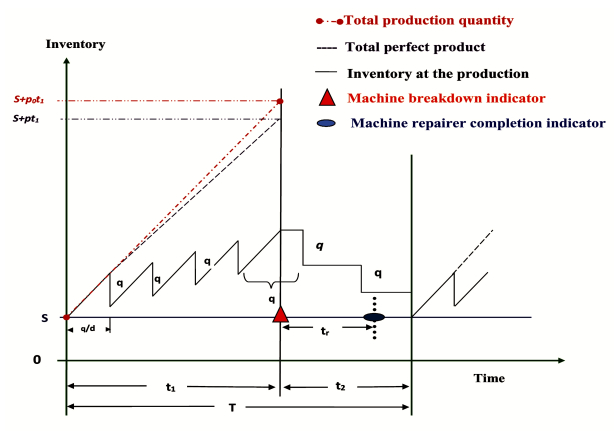
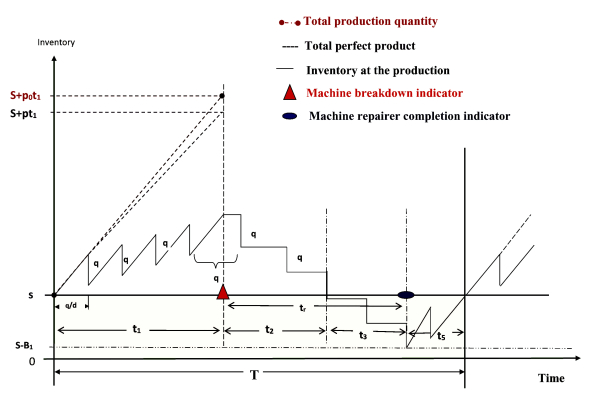
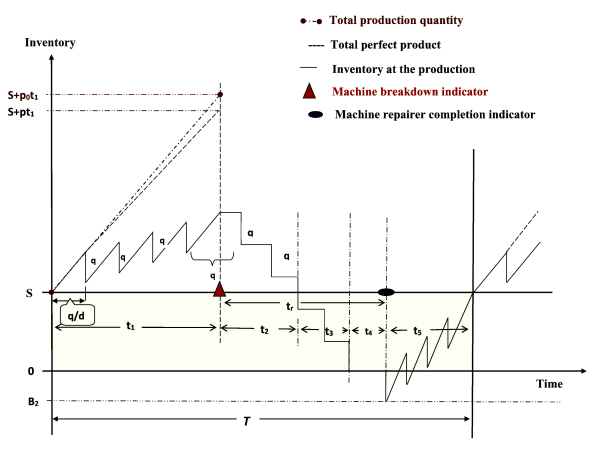
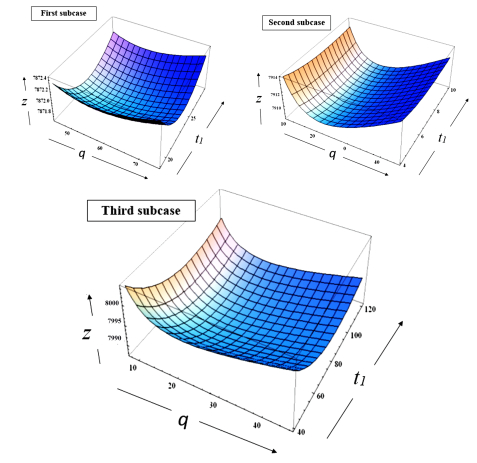
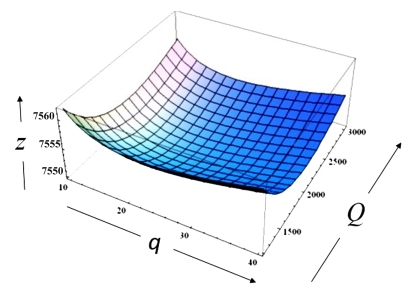
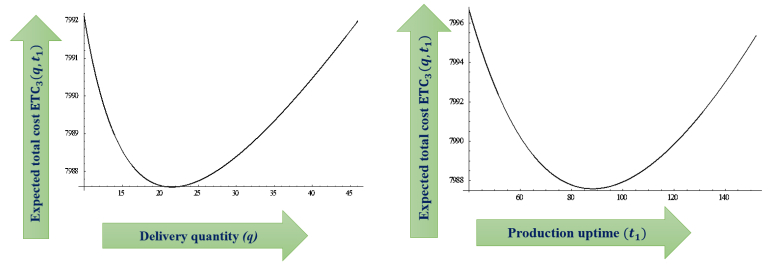
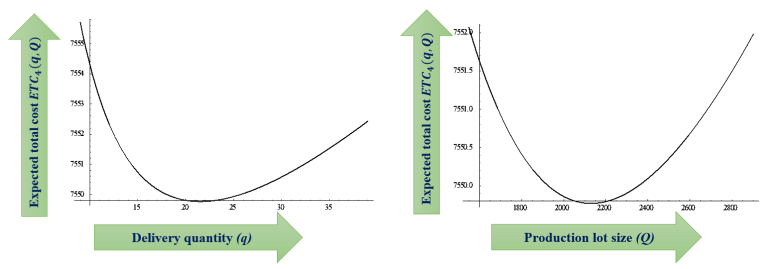


 DownLoad:
DownLoad: